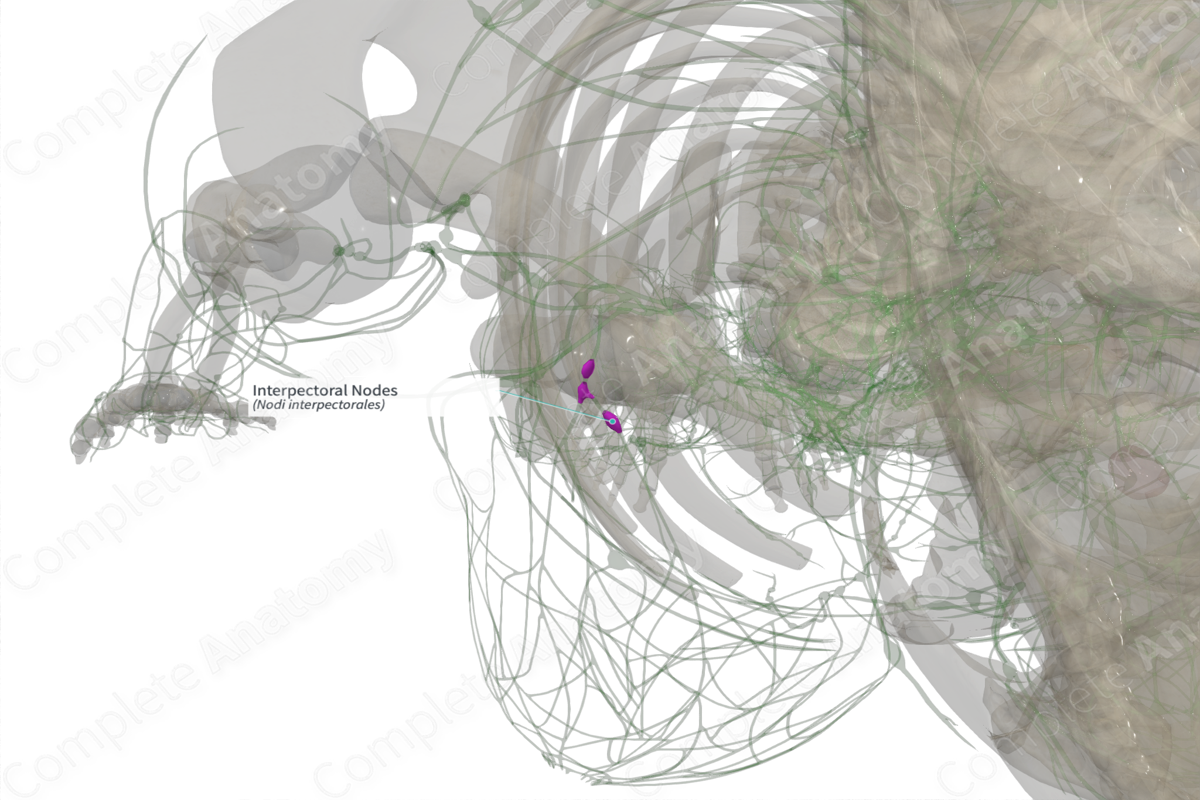
Quick Facts
Location: Superficial to pectoralis minor muscle.
Drainage: Mammary glands and muscles of the pectoral region.
Direction of Flow: Infraclavicular nodes > subclavian trunk > right lymphatic duct (right) or thoracic duct (left).
Description
The interpectoral nodes are a collateral axillary node group, made up of one to four nodes. They are located superficial to the pectoralis minor muscle, in close association with the branches of the pectoral branches from the thoracoacrominal artery. They receive afferent lymph vessels from the mammary glands and their efferent vessels drain into the infraclavicular nodes (Földi et al., 2012).
List of Clinical Correlates
—Breast cancer
References
Földi, M., Földi, E., Strößenreuther, R. and Kubik, S. (2012) Földi's Textbook of Lymphology: for Physicians and Lymphedema Therapists. Elsevier Health Sciences.




